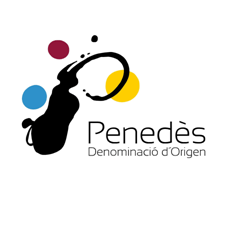About Wines
 Long thought to be the next best winegrowing region in Spain next to Rioja, Penedes is one of the oldest viticultural areas in the country. Being at the crossroads of the ancient world, the wines of the Penedes region were in high demand by the people of the Mediterranean and today, all over the world. Barcelona, the cultural influence of Penedes, built by the Romans because of its strategic proximity to the rest of the Mediterranean, continues to be the busiest port in the Mediterranean Sea today.
Long thought to be the next best winegrowing region in Spain next to Rioja, Penedes is one of the oldest viticultural areas in the country. Being at the crossroads of the ancient world, the wines of the Penedes region were in high demand by the people of the Mediterranean and today, all over the world. Barcelona, the cultural influence of Penedes, built by the Romans because of its strategic proximity to the rest of the Mediterranean, continues to be the busiest port in the Mediterranean Sea today.
Vineyards were planted throughout the area, some of which date back to the Phoenicians, who originally planted Chardonnay. Wines made from red grape varietals were the most abundant and popular. White wines, made with Muscatel and Malmsey, produced sweet wines.
During the Middle Ages, the winemaking trade was not hindered by the presence of the Moors because of the large demands of the export markets. Real demand, however, for the wines of the Penedes, came about in the eighteenth century by Latin American countries. It was at this time, that extensive grape plantings were made throughout the area. The soil, largely limestone, is perfect for viticulture, the climate is temperate with ideal rainfall for growing grapes.
With the 1950's, came the renewed interest and development of the sparkling wine industry, known as CAVA. Cavas have been made in the Penedes since the late 1890's. Parellada, Macabeo, Xarello, and Chardonnay are the principle varietals used in the production of CAVA. By law Cava must be made in Spain and must be aged in bottle a minimum of nine months before release. 95% of all Cavas are produced in the area in and around Cataluña. Cava was established as its own denominacion in 1986.
Modernization of the region's still wines began in the 1960's, when the Torres family experimented with the French varietals of Chardonnay, Merlot & Cabernet Sauvignon and combined them with the more traditional varietals of Tempranillo, Cariñena, Parellada, Xarello, and Macabeo.
There are three sub-regions of the Penedes: Bajo Penedes, Medio Penedes, and Alto Penedes. The Bajo Penedes, borders the coastline, and is the hottest sub-region because of its proximity to the water. The climate here gets as hot as in Jerez or the central plains of Spain. The soil in this subdivision consists of limestone, clay and sand. This is the best region for growing black grape varietals, such as Garnacha, Tempranillo, Cabernet Sauvignon, and Cariñena.
The Medio Penedes produces approximately 60 percent of the total grape harvest for the region, and most of the production is of white grape varietals of Xarello and Macabeo (Viura). This subdivision is separated from the coast by stretches of low-lying hills, which are best seen from the air. The climate is cooler than on the coast, but still warm. The soil consists of limestone and clay
The Alto Penedes, (also known as the Penedes Superior), is the highest region and the most humid. The climate here is very similar to that of the climate in Bordeaux. The soil is very chalky, so the white varietals thrive here, especially Parellada

